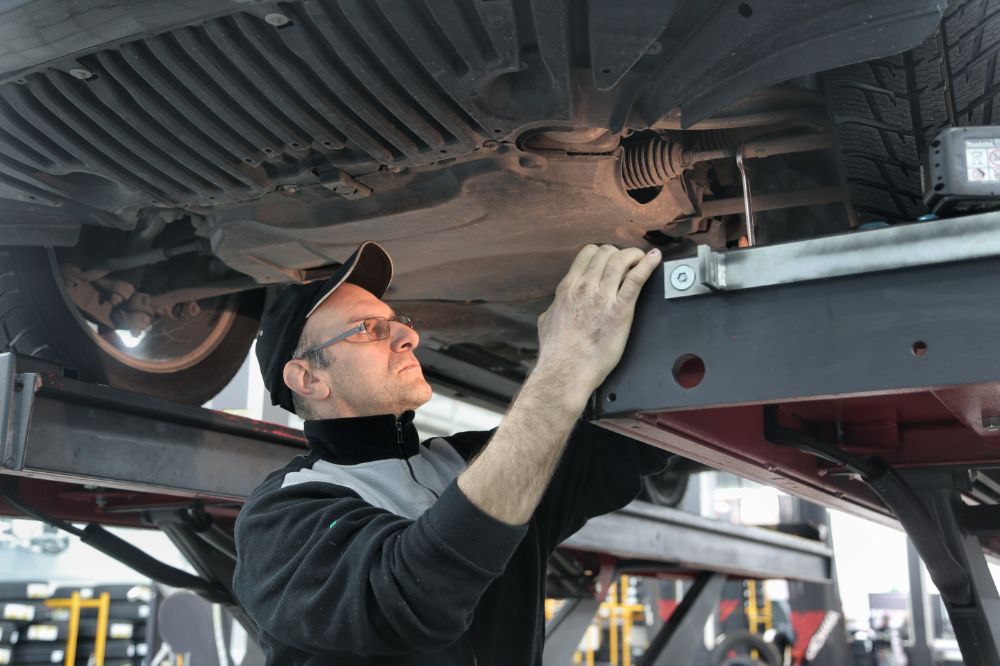8 Tips for Improving Your Dealership Service Department Experience
An ex-service department employee shares how not to get taken for a ride when you take your ride in for repairs at the dealership service department.
I’ve loved cars since I was a kid, so it’s only natural that my working life has centered around them. Of course, any automotive career resume includes a few stints in the dealership world – by necessity more than anything. My resume is no exception, and I’ve decided to disseminate what I’ve learned for the readers here. In this case, we’ll tackle the dreaded dealership service department.
Vehicle repairs are expensive, and cars and trucks get more complex every year. Even if we’re competent DIYers, sometimes there are jobs we simply can’t do on our own. Let’s face it – dealership service departments can be a scary place. They don’t have to be, though. I’ll share my advice about how to navigate your dealership’s service department when you bring your car or truck in for repairs. Here are some handy tips to make you feel good about your next trip to the service department – and how not to get taken for a ride.
1. A Little Common Courtesy Goes a Long Way
Service departments are used to most of their customers being upset about the cost of the repair and the amount of time it will take to complete. Both are very understandable, and most good service advisors will treat their customers with respect and kindness. After all, they’re people too they understand the challenge many people face coming up with a few extra grand for an unexpected repair.
However, when customers return that patience and understanding, they’re more likely to get better service. Good service writers — who are treated well — go out of their way to find alternate solutions to save time, money, or both – and they’re more likely to help out someone who isn’t screaming at them over a situation they didn’t cause and have little control over.
2. Arrive With a Clean Vehicle (If YOU Care, THEY Care)
This actually falls into the same category of common courtesy seen above. Your technician deals with greasy parts all day, but that doesn’t mean that he wants a handful of your dirty tissues, takeout wrappers, and mountains of cigarette butts when he reaches to close the door to your car. If it looks like you care for your car, it’s more likely that your technician will respect that care and reflect it back toward you and your vehicle. Cars that arrive freshly washed — and relatively clean inside — are much easier to inspect for issues, meaning your technician will likely be more thorough.
Of course, you won’t get mistreated for having a messy or dirty car. This tip is just a simple psychological “hack” to make sure that you get the best possible service. Plus, like we said, nobody wants to touch your messy napkins or old facemasks.
3. Arm Your Technicians with Detailed Symptoms
When your car experiences an issue, be as detailed as possible when you bring it in. We understand that not everyone is an automotive enthusiast who knows all about how their vehicle operates. But it’s important to make sure that your technician knows exactly what’s going on to the best of your knowledge. In other words, something like “it makes a sharp knocking noise when I turn left at low speeds” is way more helpful than “it makes a noise up front.”
Further, you might consider writing (or printing out) some notes for your technician. Service writers (the folks you talk to when dropping off your vehicle) take notes of course, but it can help to leave a detailed note with symptoms, recent service history, and anything that might help them with their diagnostic time. That said, some shops may not appreciate you Googling and diagnosing the problem yourself, since you’re most likely not a pro and there’s tons of bad information online, so we recommend just sticking to relevant facts.
4. You Can (Almost) Always Take Time To Think or Get a Second Opinion
When you’re confronted with a large, but non-critical repair (say, for example, a leaky power steering pump during an oil change), it’s okay to take your car home, look for a second opinion, or even just sleep on it. Like we said, your advisor is human too – they understand it’s an expensive repair. I can’t tell you how many times my technicians and I would commiserate about ridiculous prices for certain OEM parts, and they were probably the same conversations you’ve had with your spouse. “They want how much? What is it, dipped in gold?”
It might also be worth asking your advisor about aftermarket alternatives for some parts. While your advisor is paid partially on commission, it’s such a small percentage that they won’t try to steer you toward a more expensive OEM part for their own sake. If they advise against an aftermarket alternative, they likely have a good reason related to quality or longevity (or warranty). It’s also worth looking into independent shops that specialize in certain brands. They may lack loaners or fancy lounges, but they make up for it with economical pricing and expert experience.
The one exception to this rule, just in case it wasn’t clear? Safety. Please fix any immediate safety concerns before driving your vehicle on public roads.
5. Does Something Seem Off? Trust Your Gut
If something seems off about your service department, it probably is. If you’ve been pleasant with your advisor and helped your technician out and they still treat you poorly, take your business elsewhere. There are plenty of dealerships that would be happy to help. Having a good relationship with your service advisor is important – after all, you’re entrusting them with one of the most expensive things you own.
6. Ask to See the Old/Used/Broken Parts After a Service
It’s not uncommon for unscrupulous service departments and shops to quote customers for a job and then not actually perform the service or replace the part. How often does this happen? It’s hard to say. However, a good service department will offer to save your old parts for you. This way they can prove that they actually did the quoted work. If they’re reluctant to do so, you should be reluctant to bring your business there.
Just know that some parts (like brake calipers) have a core charge, which means the dealership must send them back to the manufacturer for remanufacturing or pay an additional fee. Many shops will also offer to have their technicians send you videos of the work they’re doing.
7. In a Rush? Take Advantage of Express Service
Let’s say you have an issue and your dealership is booked out for weeks (which is, sadly, surprisingly common). Ask your service department if they offer express service for maintenance like oil changes. Not only can you get in quicker, but if the technician inspects your vehicle and discovers a problem, they’ll typically offer to repair it right then and there without you having to wait days or weeks for an appointment
It’s a clever way to jump the line – just be sure not to mention the issue when you call for your oil change appointment. Is it a little misleading on your part? Sure, but the technicians will be happy with the extra work – if they can, they’ll accommodate it.
8. Buying Dealership Tires is a Better Idea Than Most People Think
Most people know that dealerships charge top dollar for OEM replacement parts. However, buying tires at a dealership isn’t always bad. Sometimes, service departments can offer better pricing (or match the pricing) from online, local, and discount tire retailers. This is especially true if you have a specific performance tire that was made for your vehicle (Ford Mustang, Chevy Corvette, Audi RS, Mercedes AMG, Porsche GT, etc.). And some dealerships even include free road hazard coverage.
The trick? Shop in advance and make sure all of your quotes include mounting, balancing, alignment, and disposal fees. Some shops like to make themselves look cheaper by leaving those fees off until you go to pay your bill.
~~~
I hope these tips have been helpful. Thankfully, in my numerous stints at dealerships, I never saw anything particularly unethical from my coworkers. We all wanted to take care of our customers to create repeat business and referrals. Remember, your service advisor is there to help you. All we ask is that you please get those nasty tissues away from the inside door handle. Seriously.
Image Credit: Andrea Piacquadio via Pexels








